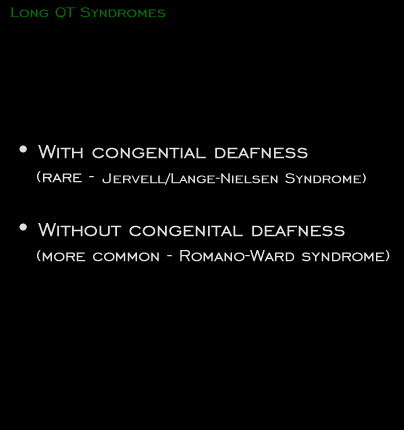
Two types of the congenital long QT syndrome have been recognized: one with and one without congenital deafness. Both are associated with ventricular tachycardia, usually the type referred to as torsade de pointes, and sudden death due to ventricular fibrillation.
